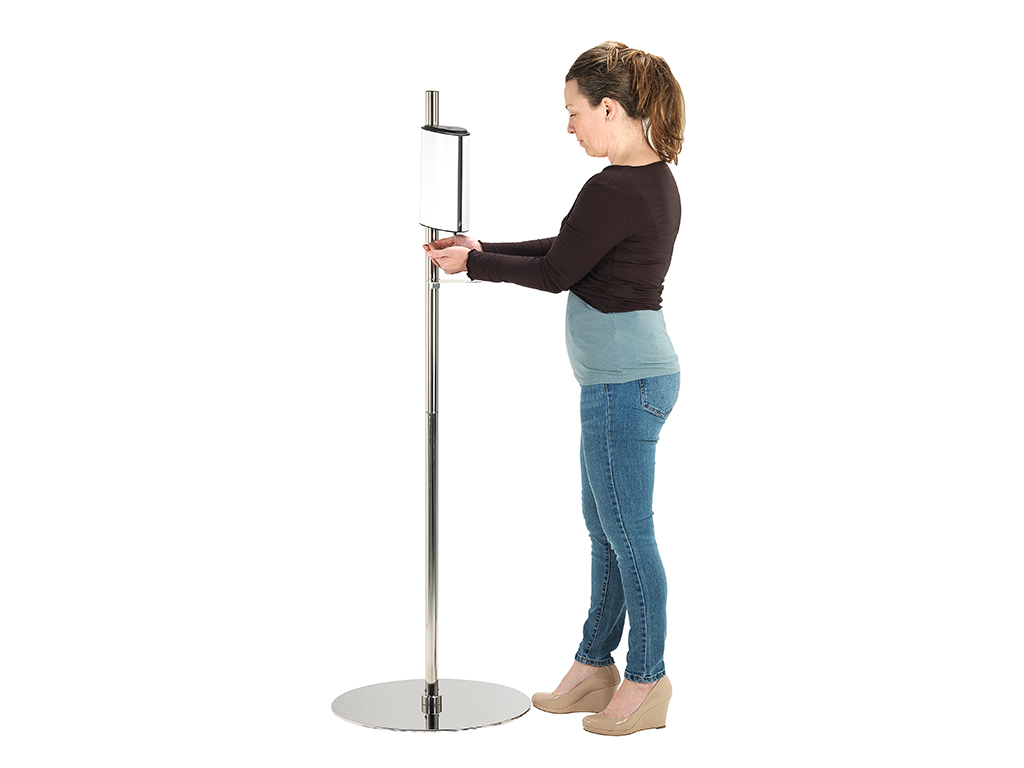Many schools in order to provide a safe environment for children and staff to return following the COVID-19 lockdown will need to provide ample sanitisation equipment to reduce the risk of viruses and bacteria spreading. Sanitiser stations have proven benefits and now will become an essential part of everyday life for the school, whether in the dining areas, playground, reception and classroom. Find out more below on the science behind using sanitiser stations.

In a study where 16 schools and a total of 6000 students used 70% alcohol hand sanitiser when entering and exiting the classroom. Absenteeism due to infections was reduced by 19.8% when compared with the control schools that didn’t use any (Hammond et al., 2000). If that wasn't reason enough and proof of the health benefits to staff and pupils in the school, the study was carried out prior to any known coronaviruses having the level of lethality and transmission rate of the recent covid-19 pandemic.
Comparing the effect of hand sanitiser vs hand washing on illness related absences in schools found that there was no significant difference. However, this was followed up with a focus group that reported a preference of using hand sanitiser over hand washing. For obvious reasons, getting children to adequately washing their hands between classes, play or lunch times is difficult. Hand sanitiser stations therefore offer appropriate alternative benefits over washing or at the very least additional resources to ensure children and staff can be safer throughout the day from the spread of viruses. The ease of user combined enables user preference for children and staff to clean their hands while minimizing the impact on their learning or break time. (Vessey et al., 2007).
In short, yes! The major contributor to missing school at the elementary level is illness caused by pathogens, and 83% of teachers report that this is the biggest problem they face within their schools (Carnegie Foundation for Education, 1990). While complex training and reinforcing procedures are necessary and can instate good hand washing skills in children, these behaviour are hard to maintain over time (Day, Arnaud and Monsma, 1993). This is where simple hand sanitiser stations available to all can have a dramatic impact on cleanliness. They're easy to use provide more access to sanitisation where limited toilet facilities cannot facilitate large numbers of people en masse attempting to fulfill the need for clean hands throughout the day.
In 2009, the World Health Organization (WHO) recommended use of sanitiser in place of traditional soap and water in their Guidelines on Hand Hygiene in Health Care (2009). No only was it found that hand sanitiser as a solution was better when compared directly with washing hands with soap and water. In the study Kramer et al (2002) they found the method of delivery was important in the effectiveness of hand sanitiser.
An interesting by-product of the above study found that gels were seen to be less effective than liquids. So, when considering what to use in your automatic hand sanitisers, consider that a liquid hand sanitiser is more effective for cleanliness than gel. In our experience it also creates less mess and build up if the unit is not used effectively by all users.
Hand sanitizers contain between 60%–95% ethanol or isopropyl alcohol by volume, and are often mixed with scents that can be appealing to young children (Santos et al., 2017). For this reason, there are several reports into the consequences of young children ingesting these hand sanitising products (Mrvos and Krenselok, 2009; Miller, Borys and Morgan, 2009; Rayar and Ratnapalan, 2013)
Sanitisers with a concentration about 60% have been shown to be more effective at killing germs than any others with a lower alcoholic concentration or even non-alcoholic versions (Kampf and Kramer, 2004).
We're always talking about about why it's made of the ingredients it is. One of the best explantions of why this is found here and we've included an extract below, as we really couldn't explain it any better.
“Consumer alcohol-based hand sanitizers, and health care "hand alcohol" or "alcohol hand antiseptic agents" exist in liquid, foam, and easy-flowing gel formulations. Products with 60% to 95% alcohol by volume are effective antiseptics. Lower or higher concentrations are less effective; most products contain between 60% and 80% alcohol.[71] Alcohols such ethanol and isopropanol, sometimes combined with quaternary ammonium cations (quats) such as benzalkonium chloride. Quats are added at levels up to 200 parts per million to increase antimicrobial effectiveness. In addition to alcohol (ethanol, isopropanol or n-Propanol), hand sanitizers also contain the following:[71]
We hope the information here about hand sanitisers for schools has been helpful. For more information about hand sanitisers for schools, why not get in touch or visit our sanitiser stations page for more information.
Rayar P, Ratnapalan S. Pediatric ingestions of house hold products containing ethanol: a review. Clin Pediatr (Phila) 2013;52:203–9.
Miller M, Borys D, Morgan D. Alcohol-based hand sanitizers and unintended pediatric exposures: a retrospective review. Clin Pediatr (Phila) 2009
World Health Organization. Guidelines on hand hygiene in health care, 2009.
The Carnegie Foundation for Education, The Foundation, New York(1990)
Quiet Hand Dryers are also an important feature in premises focused on children such as schools and child friendly restaurants.

Elerillo quiet hand dryer ideal for schools.